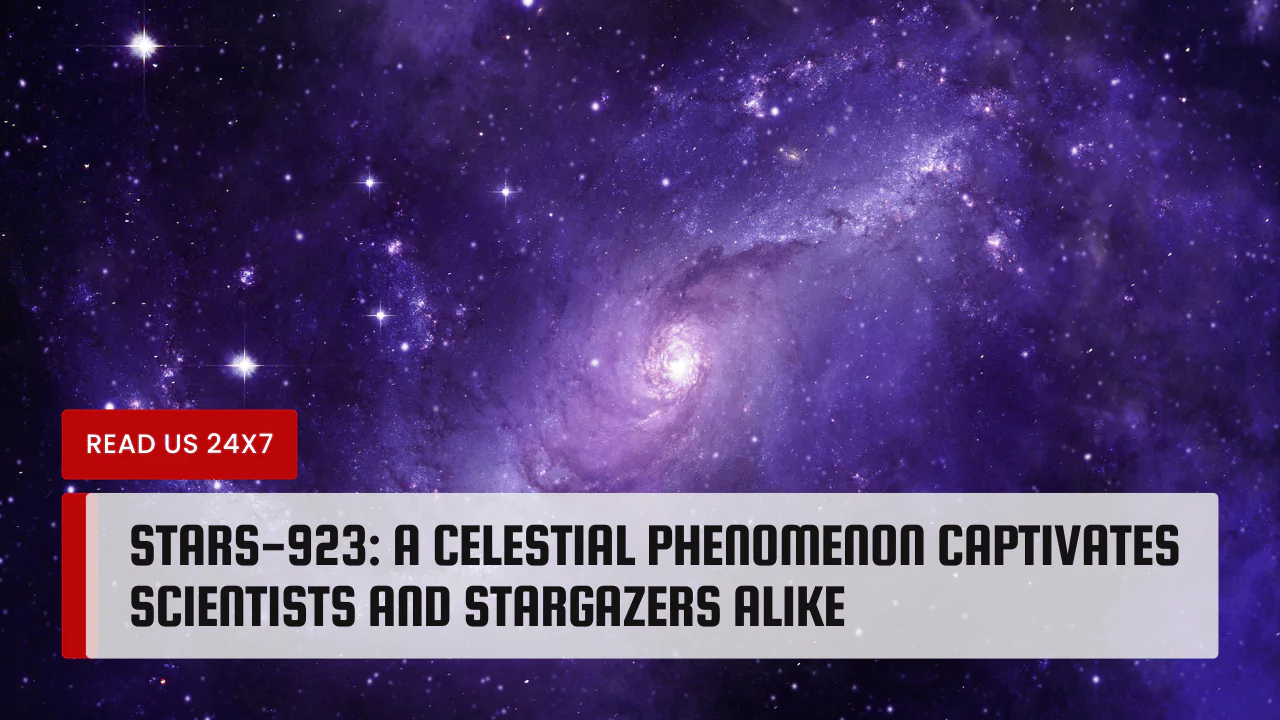Stars-923 is a fascinating star that thrills both scientists and stargazers. Its unique features and bright glow make it an important subject of study. This article will explore what Stars-923 is, why it is special, and the discoveries made about it.
Formation of Stars-923
Stars-923 was born in a nebula, a vast cloud of gas and dust. This material was consolidated over the course of millions of years by gravity. The interior of Stars-923 became increasingly hot as the dust and gas collapsed. Nuclear fusion initiated upon the temperature reaching a specific threshold. This process resulted in the release of a significant amount of energy by fusing hydrogen atoms to produce helium. Because of this vitality, Stars-923 shone brilliantly.
Like other stars, Stars-923 has gone through several stages in its life. After it burned hydrogen, it became a red giant. During this phase, the star expanded and shed some of its outer layers into space. What remains is a hot core that will continue to change throughout its life.
Unique Features of Stars-923
Stars-923 stands out from other stars due to its brightness. It shines brightly enough to be seen from a great distance. This luminosity helps astronomers study its characteristics more closely.
Another unique feature is the star’s composition. It contains many elements formed through nuclear fusion. By examining these elements, scientists learn how stars create new materials.
Stars-923 also has temperature differences across its surface. Some parts are hotter, while others are cooler. Studying these temperature zones helps scientists understand the star’s behavior and life cycle.
Importance of Spectroscopy
Astronomers use a method called spectroscopy to analyze Stars-923. This tool helps them study the star’s light and identify its elements. When light from Stars-923 passes through a prism, it splits into a rainbow. Each color represents a different element within the star. By analyzing these colors, scientists can learn what the star is made of.
This technique also reveals the star’s temperature and brightness. Spectroscopy has opened new doors for understanding stars and their life cycles.
Recent Discoveries
Scientists have made exciting discoveries about Stars-923 in recent years. They found unusual spectral lines which suggest the presence of rare elements in its atmosphere. These elements give clues about the star’s formation and evolution.
Researchers have also noticed unexpected temperature fluctuations. These changes suggest dynamic atmospheric conditions that were not seen before in similar stars. This discovery raises new questions about how stars behave throughout their lifetimes.
Additionally, scientists are looking for planets orbiting Stars-923. The search for exoplanets is exciting because it may help us understand the possibility of life in other worlds. The study of Stars-923 could reveal clues about alien worlds and how they form.
Captivating Images
Stars-923 has been captured in stunning images taken by powerful telescopes. The Hubble Space Telescope has provided breathtaking visuals of the star. These images showcase its brilliance against the vast blackness of space.
Modern technology allows astronomers to see features of Stars-923 that the naked eye cannot detect. These images help scientists analyze the star’s size, structure, and how it interacts with neighboring stars and planets. Each photograph is not only beautiful; it is a valuable resource for study.
Why Scientists Are Interested
Scientists find Stars-923 interesting for many reasons. First, studying this star provides insight into the life cycles of all-stars. Stars-923 can teach us about how stars form, live, and die. Each step in its life offers valuable information about cosmic processes.
Subsequently, the distinctive attributes of Stars-923 may facilitate discoveries that extend beyond its own system. It may facilitate the comprehension of stellar systems, which encompasses the formation of planets, by researchers. These discoveries have the potential to revolutionize our comprehension of the universe.
Third, the search for exoplanets around Stars-923 attracts interest. Finding out if there are worlds revolving around this star could open up possibilities for life beyond Earth. The search for planets is an ongoing fascination for astronomers and scientists.
The Role of Collaboration
Scientists often collaborate when it comes to studying stars like Stars-923. Many observatories worldwide share information and resources. This teamwork helps accelerate discoveries. Sharing data enables experts to build on each other’s findings, leading to more breakthroughs.
The combined knowledge of astronomers across the globe enhances the understanding of Stars-923. Each new discovery adds to the picture of how the universe works.
The Future of Stars-923 Research
The future looks bright for research on Stars-923. Advancements in telescope technology promise to reveal even more. New missions plan to collect more detailed data on its properties and behavior. This will deepen the understanding of the star’s life cycle.
Spectroscopy techniques are also improving. These enhancements will allow scientists to analyze Stars-923 even more effectively. Researchers hope to uncover more secrets about its atmosphere and any existing planets.



